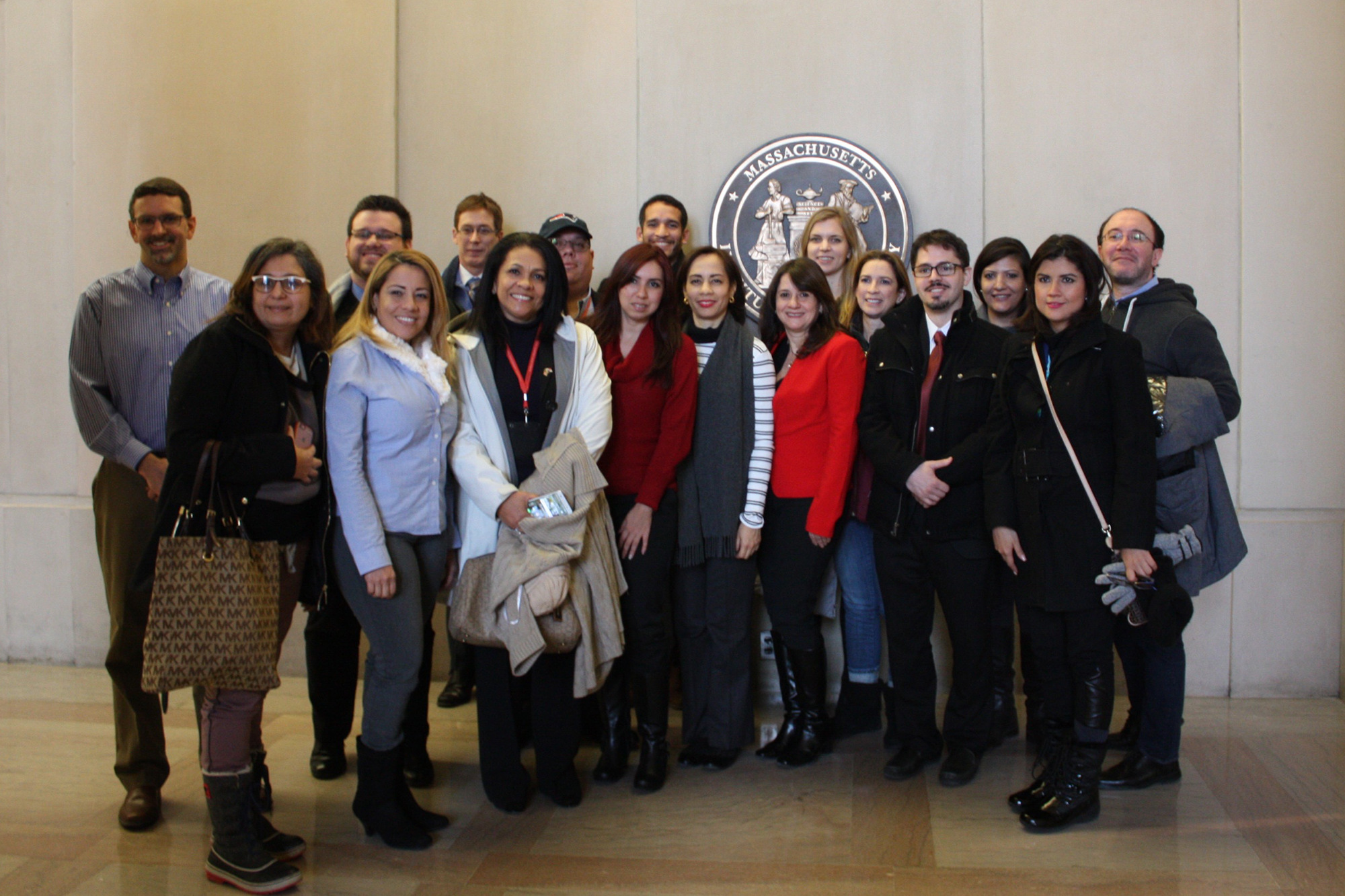
Panama City is a glass. That’s not a metaphor relating to dishes — nor the description of some fragile state the city has found itself in. It is, rather, a categorization based on statistical physics and modeling techniques used by the MIT Concrete Sustainability Hub (CSHub) to label cities based on how much their layout resembles the atomic structures of different materials. Franz-Josef Ulm, CSHub faculty director and professor of civil and environmental engineering, explained these models, and why they matter for infrastructure planning, to a visiting delegation of senior Panamanian government officials on Tuesday morning.
“When looking at materials at the molecular scale you can ask, ‘How many atoms do I have within a certain distance?’ and, from the positioning of the atoms, you can identify the material — glass, liquid or crystal,” Ulm told the delegates. “We take the same approach when we’re looking at the city scale. Except, instead of looking at how densely atoms are packed, we look at the distribution of buildings — each building is an atom and how it is organized gives a description of the city texture.”
The Panamanian officials are in the U.S. to receive advanced training in life-cycle cost analysis, best value determinations and risk management through a U.S. Trade and Development Agency (USTDA) program called the Global Procurement Initiative: Understanding Best Value (GPI). While on campus, the delegates heard from Ulm and CSHub Executive Director Jeremy Gregory about models developed by the CSHub that can be used to make better decisions when planning infrastructure projects.
An understanding of city texture, for example, makes it possible to describe the most effective path to things like the reduction of energy consumption at the city scale, or to suggest ways to build cities for better resilience. Gregory, who presented information on the CSHub’s pavements-related research explained, “Sustainability research can’t just look at making the materials more sustainable. Researchers have to look at how the materials are applied and how they’re used.”
The USTDA helps companies create jobs in the U.S. through the export of American goods and services for projects in emerging markets; it also links U.S. businesses to export opportunities by funding project preparation activities, pilot projects, and reverse trade missions with a focus on creating sustainable infrastructure and economic growth in partner countries. GPI is a program dedicated to assisting public officials in emerging economies better understand the total cost of ownership for procurement of goods and services related to infrastructure projects.
Andrea Lupo, USTDA’s director for global programs said the visit to MIT would “expose leaders from the Government of Panama to cutting-edge models and methodologies they can use to make smarter investments in their infrastructure, safeguarding their environment, while getting the best value for public funds.”
USTDA’s partnership with Panama was formalized in December through a Memorandum of Understanding and a training workshop attended by nearly 60 Panamanian procurement officials in Panama City. USTDA Acting Director Enoh T. Ebong said the program demonstrates the USTDA and Panama’s “mutual commitment to achieving greater value for money, improving project outcomes and obtaining the highest-quality goods and services for public funds.”
Eduardo Corro from Panama’s Dirección General de Contrataciones Públicas (DGCP), who is leading the delegation, said, “We welcome these types of initiatives that promote the education and training of the public procurement officials in Panama. This effort promotes competitive, fair and transparent procurements, and as government actors we are committed to promoting a best value system in the Panamanian public procurement system.”
Speaking through an interpreter on Tuesday, Corro called the experience of visiting MIT and hearing the presentations “priceless” for those in attendance. The delegation will also make stops in New York City and Austin, Texas, to meet with state and local procurement officials while in the United States.
“There is increasing interest among decision makers in the U.S. and abroad in better life cycle assessment and life cycle cost analysis methodologies,” Gregory said. “When decision makers have the best tools and information available to understand the long term financial impacts of infrastructure decisions, along with the opportunities to reduce impacts, everyone benefits.”